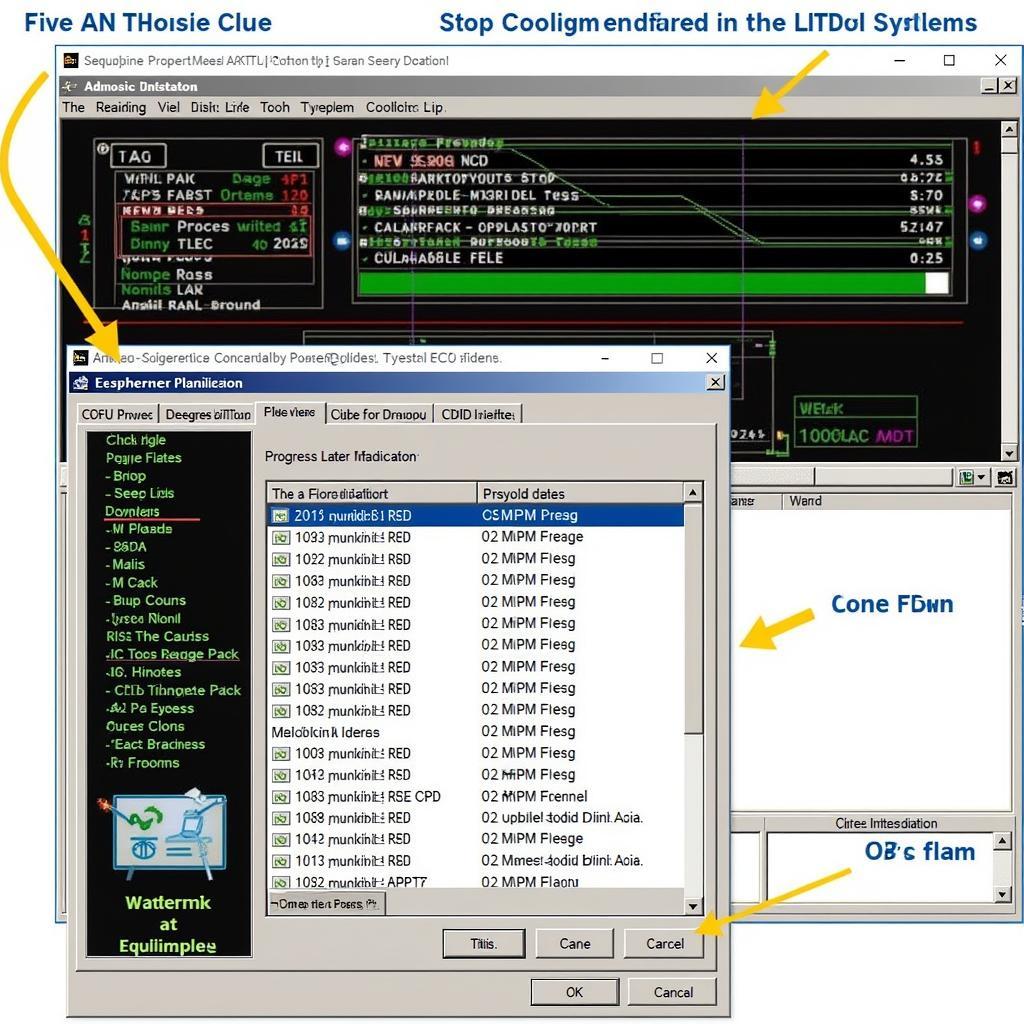In the world of automotive diagnostics, precise timing is crucial for optimal engine performance. VCDS, the go-to diagnostic software for VAG (Volkswagen Audi Group) vehicles, offers a powerful toolset to analyze and adjust engine timing. This article provides a step-by-step guide on how to check timing using VCDS, empowering you with the knowledge to diagnose and potentially rectify timing-related issues.
Understanding Engine Timing and VCDS
Before we delve into the specifics of checking timing with VCDS, let’s briefly cover the basics. Engine timing refers to the precise synchronization between the crankshaft and camshaft, ensuring that valves open and close at the correct moments for efficient combustion.
VCDS (formerly known as VAG-COM) is a Windows-based diagnostic software that interfaces with your vehicle’s onboard computer. It allows you to access a wealth of data, including live sensor readings, fault codes, and advanced settings like timing adjustments.
vcds-software-interface|VCDS Software Interface|Screenshot of the VCDS software interface showing diagnostic options for a VAG vehicle.
Checking Timing with VCDS: A Step-by-Step Guide
Here’s a detailed guide on how to check your engine timing using VCDS:
-
Connect and Prepare:
- Connect your VCDS interface to your vehicle’s OBD-II port and turn the ignition on.
- Launch the VCDS software on your computer and establish communication with your vehicle.
-
Access Engine Electronics:
- Select “Select Control Module” from the main menu.
- Choose “01 – Engine” to access the engine control module.
-
Measuring Blocks:
- Go to “Measuring Blocks – 08.”
- In the “Group” field, enter the specific group number for your engine code to view timing data. Consult your vehicle’s service manual or a reliable online resource for the correct group number.
-
Interpreting Timing Values:
- The displayed values represent the timing angles. Typically, you’ll find:
- Injection Timing (TDI engines): Indicates when fuel is injected relative to piston position. Ideal values vary but should fall within specified tolerances.
- Ignition Timing (Gasoline engines): Shows when the spark plug fires relative to piston position.
- The displayed values represent the timing angles. Typically, you’ll find:
-
Comparing to Specifications:
- Compare the displayed timing values to the manufacturer’s specifications for your specific engine code and model year. These specifications can be found in the service manual or online resources.
-
Analyzing Deviations:
- Significant deviations from the specified timing values can indicate a problem, such as:
- Stretched timing belt/chain: Can cause retarded timing.
- Worn camshaft or crankshaft sensor: May lead to inaccurate readings.
- Faulty ECU: In rare cases, a malfunctioning engine control unit can disrupt timing.
- Significant deviations from the specified timing values can indicate a problem, such as:
engine-timing-measuring-blocks|Engine Timing Measuring Blocks|Screenshot of VCDS software displaying engine timing values in measuring blocks, highlighting specified tolerances.

